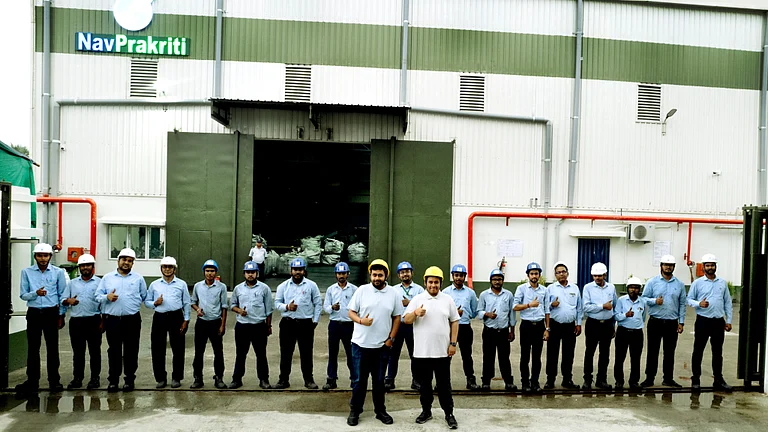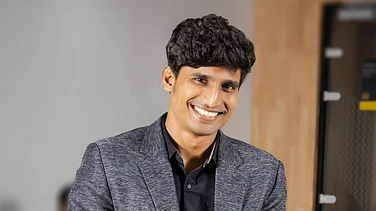At a time when conversations around research and development (R&D) in the Indian startup ecosystem are gaining momentum, Vinay Singh, Founding Partner at Fireside Ventures, believes the country’s D2C brands still have a long way to go.
While there are promising exceptions like Atomberg and The Sleep Company, most D2C startups focus on packaging, distribution, and branding over genuine product innovation. Singh points out that high upfront costs, long gestation periods, and the pressure of VC timelines deter deeper investment in R&D—despite its importance for long-term value creation and consumer loyalty.
In an interview with Outlook Business, Vinay Singh, Founding Partner at Fireside Ventures, shares sharp insights on why D2C brands need to invest more in R&D, how quick commerce is reshaping their strategy, and why legacy brands are chasing acquisitions to stay relevant in a fast-changing market.
Q: You also invest in Gen Z-focused brands. Do you see teenage or Gen Z consumers becoming a significant category for D2C brands?
A: Yes, but it’s still early. When we started Fireside Ventures, the excitement was around millennials discovering and purchasing products through social media and e-commerce. Now, Gen Z is emerging as a unique consumer segment. They engage with brands differently, they discover products via Instagram Reels and social media but prefer purchasing on Quick Commerce platforms. Personalization and efficacy driven products are key for them. Brands like SAM, which we’ve invested in, cater specifically to this demand.
Q: Is advertising a major expense for brands on quick commerce? How does it impact small brands?
A: Yes, advertising is a major cost on quick commerce, especially for brands without strong organic demand. Well-known brands benefit from consumers searching for them directly, reducing the need for paid promotions. In contrast, newer brands must invest heavily in advertising to gain visibility. For example, Mother Dairy milk on Blinkit requires no ads, while a new oat milk brand must pay for digital shelf space. If platforms demand high ad spending, it signals weak organic demand. Brands should first build recognition through other digital channels before entering quick commerce.
Q: How does this compare with modern trade in India?
A: Quick commerce follows the same model as modern trade. When big retail chains like Big Bazaar and Star Bazaar emerged, they charged high margins for premium shelf space. Established brands like Maggi and Parle-G secured prime placement, while newer brands had to pay hefty listing fees and offer discounts. Quick commerce now operates similarly—popular products get stocked on fair terms, while lesser-known brands pay more to offset slow sales risks.
Q: There’s a perception that D2C brands in India don’t invest enough in R&D. How can they improve their focus on innovation and product development?
A: That’s a valid observation. While there are some outliers—like Atomberg, which built India’s first BLDC fan, and The Sleep Company, which engineered a pressure-relieving polymer—overall, R&D intensity in the D2C space is low. Most brands focus on access, packaging, and brand proposition rather than deep product innovation.
The challenge is that true R&D involves high capex and long gestation periods, which don’t align well with typical VC fund cycles. Creative development and consumer insight studies do happen, but fundamental product innovation is still low.
The high upfront costs, extended timelines, and pressure to generate fast results deter deep investment in R&D, even though it's essential for long-term breakthroughs.
Q: Would government-private collaboration help bridge the gap?
A: Absolutely. A government-backed fund of funds with a longer horizon—say, 15 years—could provide the patient capital R&D needs. We also need stronger industry-academia collaboration to create a robust innovation ecosystem. Think of how Xerox’s R&D enabled Apple’s early innovations—India needs a similar platform where future-facing ideas are documented, even if they aren't commercialised right away.
Q: How can Indian brands focus more on R&D?
A: Brands should move beyond minor product tweaks and invest in game-changing innovations, as seen with Atomberg’s BLDC fan or The Sleep Company’s mattress material. Understanding real consumer needs rather than just repackaging existing products is key. Additionally, improving supply chain and packaging can enhance product usability, delivery, and storage. Prioritising R&D over marketing-led differentiation will help Indian brands build long-term value and stronger consumer loyalty.
Q: Raaz App recently completed a funding round. Have you observed a growing interest among brands in offering reproductive health services for men, or is this still a very niche category? How is it shaping up in the D2C space?
A: There is a definite shift happening, and it's no longer just a niche category. Brands like Man Matters, Bold Care, and even Kapiva, which has a large business in Shilajit, are addressing this space. If we look at the bigger picture, factors such as environmental changes and lifestyle habits. The rise of startups in this space indicates that consumers are becoming more educated about these issues and are seeking solutions beyond traditional medical routes.
Q: Recently, HUL acquired Minimalist. Do you see such D2C acquisitions becoming a trend?
A: Yes, and here’s why. Legacy FMCG brands were built for mass distribution and media. They didn’t cater to niche consumer needs—like a dandruff shampoo tailored for curly-haired women—which D2C brands now serve. These large brands missed emerging micro-trends because their scale models didn’t support such granular targeting.
Q: So, D2C brands are filling the gaps left by legacy players?
A: Exactly. Take Nestlé—they’re huge in baby food, but ignored millet-based options like ragi, creating an opening for startups like Slurrp Farm. As Indian consumers premiumise, conglomerates with middle-class-focused portfolios are struggling to keep up. Their aspirational value is fading for the affluent, high-growth segments.
Q: Is this shift in consumer preference pushing M&A activity?
A: Definitely. Legacy brands are realising their existing portfolios don’t excite new-age consumers. Since organic growth is tough, they’re turning to acquisitions to stay relevant. There are financial reasons driving this too. Earlier, dividend income was tax-free; now it’s taxed as per slab. Investors prefer capital gains over dividends, which pressures companies to reinvest profits instead of distributing them. But if their existing brands aren’t growing, they’re better off acquiring growth.
Q: Can you elaborate on the shifts in consumer behavior that is driving this change?
A: Brand formation happens when consumer behavior shifts and legacy brands fail to adapt. Seven to eight years ago, the big disruption was millennials wanting natural, chemical-free products. Now, Gen Z expects brands to be digital-first, AI-powered, and hyper-personalized. They don’t just look for ‘clean’ products–it’s a given. They want scientifically fortified, high-efficacy formulations with immediate results. They’re also comfortable engaging with AI for product recommendations, which is another shift.
Q: As a brand, what should be the key focus when approaching quick commerce platforms?
A: Proven demand. If your product already sells well, has strong recall, and moves fast, quick commerce platforms will list it without much hassle or extra fees. But if you’re still figuring out product-market fit, this isn’t the right channel. Why? Because platforms see unproven products as a risk. They’ll either charge a high listing fee or expect you to spend heavily on promotions just to get noticed. Quick commerce isn’t about creating demand—it’s about serving demand that already exists. If consumers are already looking for your product, it’s a great fit. If not, you’re better off testing it elsewhere first.
Q: You mentioned that we are at the cusp of another cycle of disruption. Can you explain what you mean by that?
A: Every disruption happens at the intersection of new consumers, new channels, and new category trends. In 2016, it was millennials, e-commerce/social media discovery, and ‘clean’ products. Today, the three intersecting factors are Gen Z, AI and Q-Commerce, and the demand for high-efficacy, lab-grade ingredients. These shifts signal a fresh wave of brand-building opportunities.
Q: How important is Q-Commerce for D2C brands today? Is it becoming necessary for visibility and growth?
A: Absolutely. The traditional brand growth funnel started with D2C websites, followed by marketplaces like Amazon and Flipkart, then modern trade, and finally general trade. With Q-Commerce, brands can delay going offline while scaling up online. This changes the game by allowing digital-first brands to compete more effectively with traditional FMCG giants.
If a brand isn’t on Q-Commerce, consumers will simply switch to an alternative. But for digital-native brands, it extends the life cycle of online scaling. It allows brands to reach revenue milestones before committing to offline expansion, reducing the dependency on high capital investments for retail distribution.
Q: Will your focus remain on early-stage companies, or are you planning to expand into later stages?
A: We’ve always been early-stage investors. When companies are doing Rs 10–30 lakhs in revenue, we’re happy to talk. Earlier, founders needed to raise that money from us. Now, they have access to friends-and-family capital and multiple online channels, so they might hit Rs 1–2 crores before raising institutional capital. But often, that revenue is “noisy”—it looks good on paper but doesn’t reflect a sustainable product-market fit. That’s where we come in.
































